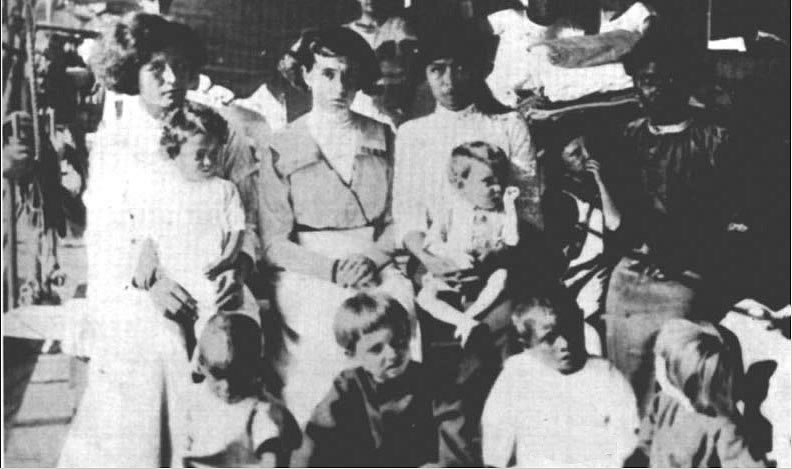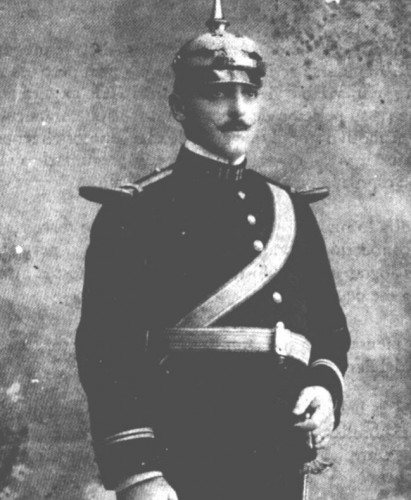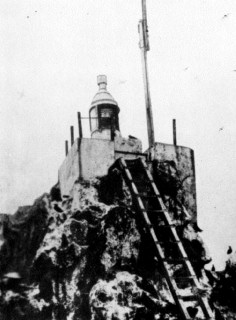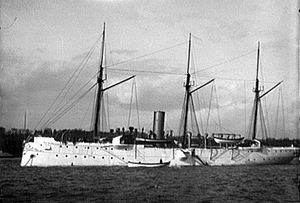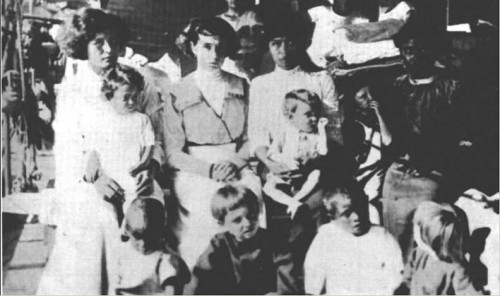Before a passing ship had rescued the remaining inhabitants of the island, four women and seven children, the world knew nothing of the lonely atoll known as Clipperton Island. With the rescue of the emaciated inhabitants, the true and horrific story of Clipperton came to be known.
Off the coast of Colima Mexico, across acres and acres of deep, blue pacific water sits a lonely island, an atoll, whose only inhabitants consists of crabs, birds, iguanas, and the hundreds of sharks that patrol its glassy waters. With scarce vegetation and a toxic lake that makes up most of Clipperton, the island is hardly a place you’d consider paradise.
Yet throughout the ages there has been attempt after attempt to colonize Clipperton and capitalize on its abundant supply of fresh guano. Mining for guano had grown into a lucrative market and by 1899, with permission by the Mexican government, The British Pacific Island Company acquired the rights to the several guano deposits across Clipperton. Within weeks of signing the mining company had built a settlement and began work. That same year Mexico’s president Porfirio Diaz ordered that a lighthouse be erected on the island. It was to be manned at all times and a lighthouse keeper was eventually placed on the island with the rest. Within months, a few dozen men and their families became the first and only residents of the lonely speck of land amongst an endless shimmering blue field.
The British had started to work on the land planting palm trees, a vegetable garden with imported soil, and several homes scattered across the ring. It had become an ongoing effort to cultivate the arid land. The adventurous families and workers were visited by supply ships about every 8 weeks from a port in Acapulco, Mexico.
Fearing losing the land, Mexico sent a group of 13 men and their families from the Mexican Army to stand guard on Clipperton in 1906. Acting as the governor of Clipperton was an officer from the same army, a man named Ramon Arnaud.
The forgotten governor
Ramon Arnaud was a decorated officer in charge of the military garrison on Clipperton. He spoke Spanish, French, and English and had prior experience with French nationals. Captain Arnaud was President Diaz’s first choice for Clipperton.
Arnaud came home to a tumultuous Mexico from his travels to Asia. A revolution was tearing throughout Mexico. Greeted by the chaos the rang across the country and an official order to inhabit the desolate island. The captain felt that his order to govern Clipperton was a way to exile him from Mexico. Having arrived in the midst of the revolution might have given the captain a sense of paranoia, however his mind was put at ease when he was told that he had been chosen personally by the President for the job.
The captain accepted the order to guard Clipperton and protect Mexico’s sovereignty over the island. Although they were supplied with care packages, food, and tools, the island still fought to keep it’s reputation as an inhospitable place. Within a few years, the mines that provided endless amount of quality guano were becoming too much of a financial burden on the British Pacific Island Company. The world market had a growing number of guano providers, making the colonization efforts on Clipperton non profitable. In 1910 the British, losing money and effort, decided to remove all but one personnel from Clipperton.
There had been around 100 inhabitants on Clipperton island. Most of them were British employees, Mexican soldiers and their families except for a German, Gustav Shultz (Representative of the mining company) who had suffered from a mental breakdown, and also the lighthouse keeper remained. Little by little the British ships began leaving, taking with them those who had enough of the island. Then the conflict of the Mexican Revolution escalated. Which only brought worry and despair to the island’s inhabitants. Because of the escalating conflict of the Mexican Revolution, The families in Clipperton were soon forgotten. The ships that they had come to rely upon for survival had stopped coming. With failed agricultural projects, food became the islander’s top concern.
It was then that an American ship landed on Clipperton, bringing supplies, provisions, and much relievement to all. The Americans advised Arnaud and his soldiers that it would be best to abandon the island, given that the Revolution was Mexico’s top and only priority and not the few dozen families guarding Clipperton. Gustav Shultz boarded the American ship and left with the crew. Abandoning Arnaud, his soldiers, and the lonely lighthouse keeper. Although there was talk of abandonment by their country, Arnaud and his men stayed true to their sworn duty to protect Mexico’s claim of Clipperton.
Clipperton had now been completely abandoned by the British and the Mexican government. By then, there were around 26 people left on the island.
Lighthouse Keeper
It would be months before some of the inhabitants began to suffer from the lack of food and proper medical care. Surviving mainly on crabs, birds, coconuts, and the occasional fish, many began to perish from the effects of scurvy. By 1917 most of the males had died. Only Arnaud and a couple of other men remained. Around this time Captain Arnaud claimed to have spotted a passing ship. However he was too weak and sick to row out by himself. He instructed his remaining men to help him row out into the ocean to flag down the ship. It would be the last time the women would ever see their men. Whether the Captain saw an actual ship or hallucinated one will never be known. The only thing that is known is that after they rowed out into the water, they never returned.
The women, including Arnaud’s pregnant widow, had no time to mourn. For they had spotted a large hurricane heading towards the island and needed to find shelter quickly. It was Alicia Arnaud who gathered all the remaining women and children inside the basement of her home. That night, amidst violent winds and thundering rain, she gave birth to their fourth child.
When the hurricane broke and all appeared calm, the women and children emerged from the basement only to find that their settlement had been destroyed, completely obliterated by the hurricane. They huddled together, trying to figure out what they could do next when out stepped the lighthouse keeper. Victoriano Alvarez was essentially the last man on Clipperton. The women watched as he collected all the weapons he could find and threw them all out into the water. Keeping only one rifle for himself. Alvarez soon claimed himself as ‘the king of Clipperton’ and would unleash terror across the island.
For the next year or so, Alvarez ruled with complete control. He enslaved the women and used them as sexual slaves. He would constantly rape, threaten and beat them and there was no one to stop him. No one really thought about the hermit that lived in the lighthouse until it was too late. Alvarez, suffering from some sort of mental breakdown killed a mother and daughter who refused to sleep with him. He used fear and agression to subdue the women and children and would constantly apply beatings to keep them all in check.
As the months passed and with no signs of rescue, the king of Clipperton ruled with impunity. He would grab whichever women or young child he wanted and raped them at gunpoint. When he was finished with 20-year-old Altagracia Quiroz, he moved onto a 13-year-old named Rosalia Nava. And so on and so on. It was 20-year-old Tirza Randon who was the most outspoken of the women. She spoke out against the barbaric crime and rule Alvarez possessed on Clipperton and wanted him dead. Alvarez knew this and would constantly beat and rape her. He would tell her (in front of the others) that if any rescue ship were to arrive, she would be the first one dead so that she could not talk about the atrocities he was committing. The lighthouse keeper, the man once referred to as a hermit, was now a blood-thirsty, sexually depraved psychopath. And there was no one to stop him.
Around 1917, fighting against disease, starvation, and a sexual predator, Tirza Randon decided that enough was enough. That Alvarez had to go. One July day Alvarez returned to the main settlement with Tirza. He held her captive in his lighthouse all night, beating and raping her. Alvarez then told Arnaud’s widow to present herself at his hut near the lighthouse first thing in the morning.
Sensing this as an opportunity, Alicia Arnaud and Tirza Randon began plotting Alvarez’s death. On the 18th of July 1917, Arnaud and her 7-year-old son (Ramón Arnaud Jr), as well as Tirza Randon left the main settlement and headed over to the lighthouse keeper’s hut.
There they found Alvarez sitting outside. He was roasting a bird when the two women surprised him and began their attack. Tirza grabbed a hammer from the hut and began attacking Alvarez. Alicia then grabbed an axe and swung wildly at Alvarez. A hammer to the head knocked Alvarez to the ground. It was there that the women unleashed their rage against the king.
Alicia Arnaud told her son to run into the hut and fetch the rifle. While he left, the two stabbed, kicked, and chopped away at the king’s body. Slashing his face until completely mutilated and stabbing his body until it was completely drenched in blood. It was a death tailored only for a mad king.
Ramón Arnaud Jr. could only stand aside and watch as the two women unleashed their wrath on the lifeless body. It was then that Ramón spotted a ship. It had been over two years since they had laid their eyes upon a vessel and there it stood. A gleaming beacon of hope.
USS Yorktown
The American gunboat which was patrolling the waters happened to come across the island. The boat and its crew was out patrolling for any German U-boats rumored to be stationed around the Pacific.
The Americans made their first attempt at reaching Clipperton. They sent a smaller boat ashore, but given the tumultuous waves and the high and sharp rocks that surrounded the atoll, it made their rescue mission seem almost impossible. The small boat had no other choice but to return. Leaving the women and children in the island to speculate that they had been abandoned once again.
The women and their children now knew that they were going to face certain starvation. Seeing their rescue boat head back into the ocean brought upon a somber mood. They all stood and watched as the boat sailed away, essentially signing their death certificates. Equipped with a rifle and bullets, whispers of suicide began making rounds amongst the doomed mothers.
Unbeknownst to the grieving women and children, the Americans attempted a second rescue mission to which they had succeeded in landing on the shores of Clipperton. The American sailors met the malnourished inhabitants and what was left of the settlement. They noted that the children appeared small for their ages, which was due to the rampant disease and starvation that loomed over the island. The sailors then boarded alongside with the Clipperton survivors and they left the island. Leaving the Mad King’s body to rot in the sun, becoming a meal for the crabs. Four women and seven children were all that remained of the attempt at colonizing Clipperton.
The official report written by Navigator Lieutenant Kerr of the USS Yorktown, only talked about the rescue of the inhabitants of Clipperton. In its entirety, there was no mention of the lighthouse keeper or the rapes and murders that took place on the island. The men figured that it would be best to protect the survivors from any potential legal actions of what really happened on Clipperton Island. When the Yorktown ship pulled onto a Mexican harbor, they were greeted by stunned officials and family members who had been told that all of the inhabitants of Clipperton had perished.
For 17 years the sailors and survivors of Clipperton kept silent about what really happened on Clipperton Island between 1914 and 1917.
Sources: https://en.wikipedia.org/wiki/Ram%C3%B3n_Arnaud

